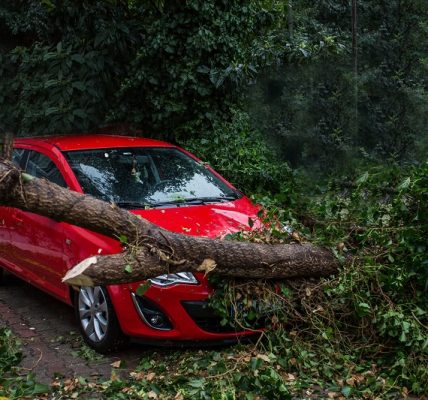You’re driving along, enjoying the scenery, when suddenly a cryptic “CAL” illuminates on your car’s dashboard. A wave of panic might wash over you – is something terribly wrong? Should you pull over immediately? Don’t worry! While it’s always wise to be attentive to dashboard warnings, “CAL” is usually not a cause for major alarm. In most cases, it’s simply a reminder that your car is due for a service or calibration.
This article will demystify the “CAL” light, explaining its various meanings, why it appears, and the appropriate steps to take when you see it.
The Usual Suspect: Routine Maintenance
In the vast majority of vehicles, the “CAL” light is tied to your car’s maintenance schedule. Modern cars have sophisticated onboard computers that track mileage, driving conditions, and even time elapsed since the last service. When a predefined threshold is reached, the “CAL” light gently reminds you it’s time for routine maintenance like an oil change, filter replacement, or a general checkup.
Think of it as your car’s way of saying, “Hey, I’m due for a spa day!” It’s a proactive alert designed to prevent potential problems down the road by ensuring your vehicle receives timely care.
Calibration Calls: Beyond Basic Maintenance
While routine maintenance is the most common reason for the “CAL” light, it can sometimes signal the need for specific calibrations. Here are a few examples:
- Tire Pressure Monitoring System (TPMS): If your car has TPMS, the “CAL” light might indicate that the system needs recalibration. This often involves resetting the sensors after tire rotation or replacement.
- Steering Angle Sensor: This sensor plays a crucial role in stability control and other safety systems. If it malfunctions or requires calibration, the “CAL” light might appear.
- Other Systems: Depending on your car’s make and model, the “CAL” light could be linked to various systems requiring periodic calibration, such as adaptive cruise control, lane departure warning, or even the transmission.
Decoding the Message: Variations and Accompanying Lights
The “CAL” light can sometimes appear with slight variations or in conjunction with other warning lights, providing more specific clues about the issue:
- “CAL” with a Wrench: This often signifies a general service reminder.
- “CAL” with an Oil Can: This points directly to an overdue oil change.
- “CAL” with TPMS Symbol: This clearly indicates a need for tire pressure monitoring system attention.
Always pay attention to any accompanying symbols or messages on your dashboard, as they can offer valuable insights into the specific reason for the “CAL” light.
What to Do When “CAL” Lights Up
Seeing any warning light on your dashboard can be unsettling, but here’s a step-by-step guide to address the “CAL” light:
- Consult Your Owner’s Manual: Your car’s owner’s manual is your best friend. It will provide detailed information about the specific meaning of the “CAL” light for your make and model, outlining recommended actions and maintenance schedules.
- Check Your Service Records: If you meticulously maintain service records, review them to see if any scheduled maintenance is due.
- Note Accompanying Lights: As mentioned earlier, pay close attention to any other warning lights appearing alongside “CAL” to get a clearer picture of the situation.
- Schedule a Service Appointment: If you’re unsure about the cause or can’t resolve it yourself (like resetting the TPMS), it’s always best to schedule an appointment with a trusted mechanic or your dealership’s service center.
Ignoring “CAL”? Proceed with Caution
While the “CAL” light usually indicates routine maintenance, ignoring it for extended periods can potentially lead to:
- Voided Warranties: Some manufacturers require adherence to recommended maintenance schedules to keep warranties valid.
- Reduced Vehicle Performance: Neglecting essential services like oil changes can negatively impact engine performance and fuel efficiency.
- Increased Risk of Breakdowns: Ignoring necessary calibrations or maintenance can increase the likelihood of unexpected breakdowns and costly repairs.
Modern Cars, Smart Maintenance
The “CAL” light is a product of increasingly sophisticated car technology. It’s designed to be helpful, not alarming. By heeding its call, you’re taking a proactive approach to car care, ensuring optimal performance, safety, and longevity.
Think of it as a partnership with your car – it communicates its needs, and you respond with timely care. This simple interaction can save you headaches, money, and potentially even keep you safe on the road.
Beyond the “CAL” Light: Staying Proactive
Even when the “CAL” light isn’t shining, there are proactive steps you can take to maintain your vehicle’s health:
- Regular Visual Inspections: Periodically check your tire pressure, fluid levels, and look for any signs of wear and tear.
- Be Attuned to Your Car: Pay attention to any unusual noises, vibrations, or performance changes, and address them promptly.
- Embrace Technology: Many modern cars have apps or online portals that provide maintenance reminders, vehicle diagnostics, and even allow you to schedule service appointments.
In Conclusion
The “CAL” light on your car’s dashboard is generally a friendly reminder to keep up with your vehicle’s maintenance needs. While it might seem like an unwelcome interruption, it’s actually a valuable tool that promotes proactive car care. By understanding its meaning and taking appropriate action, you can ensure your car stays happy, healthy, and running smoothly for miles to come.






